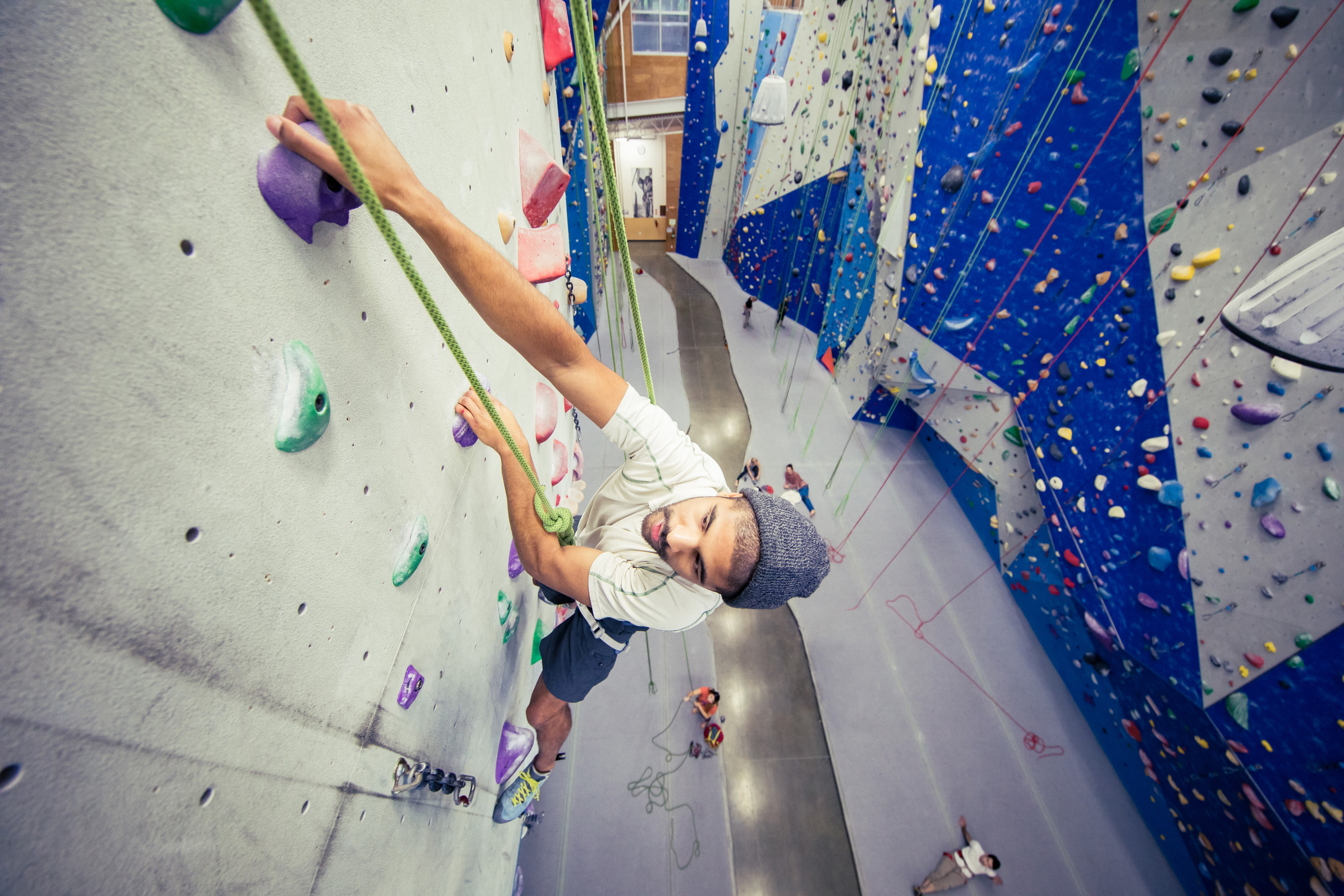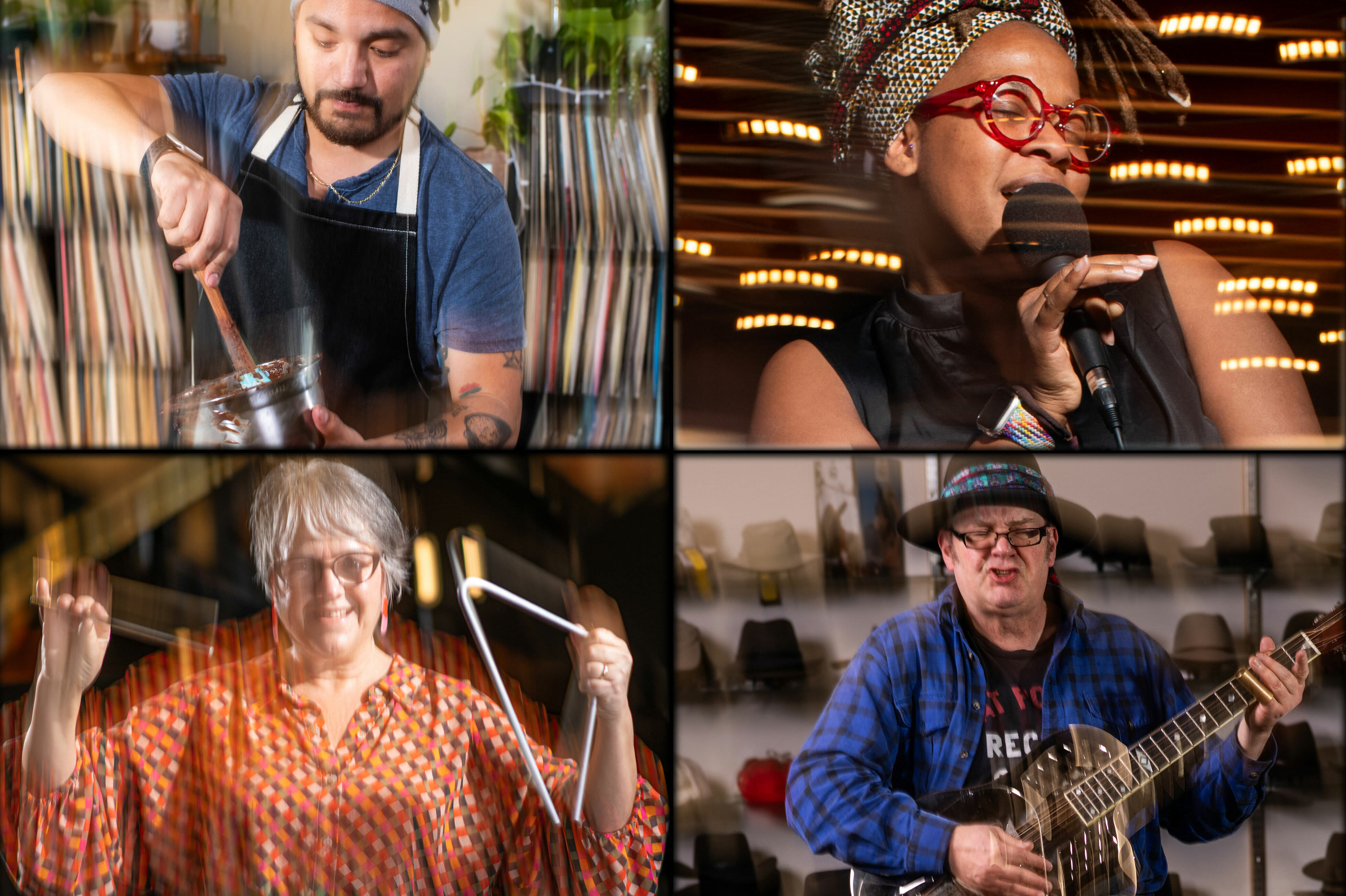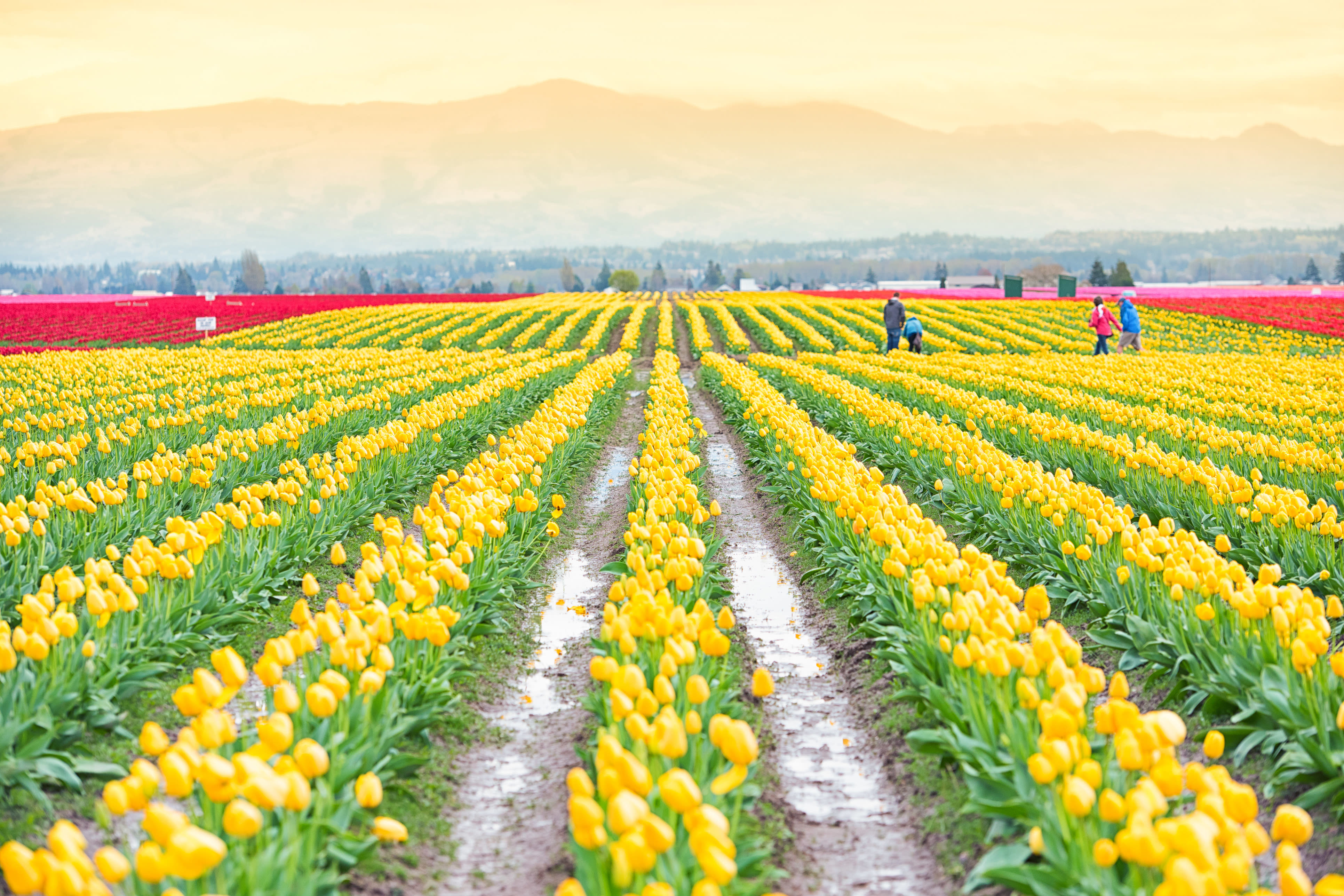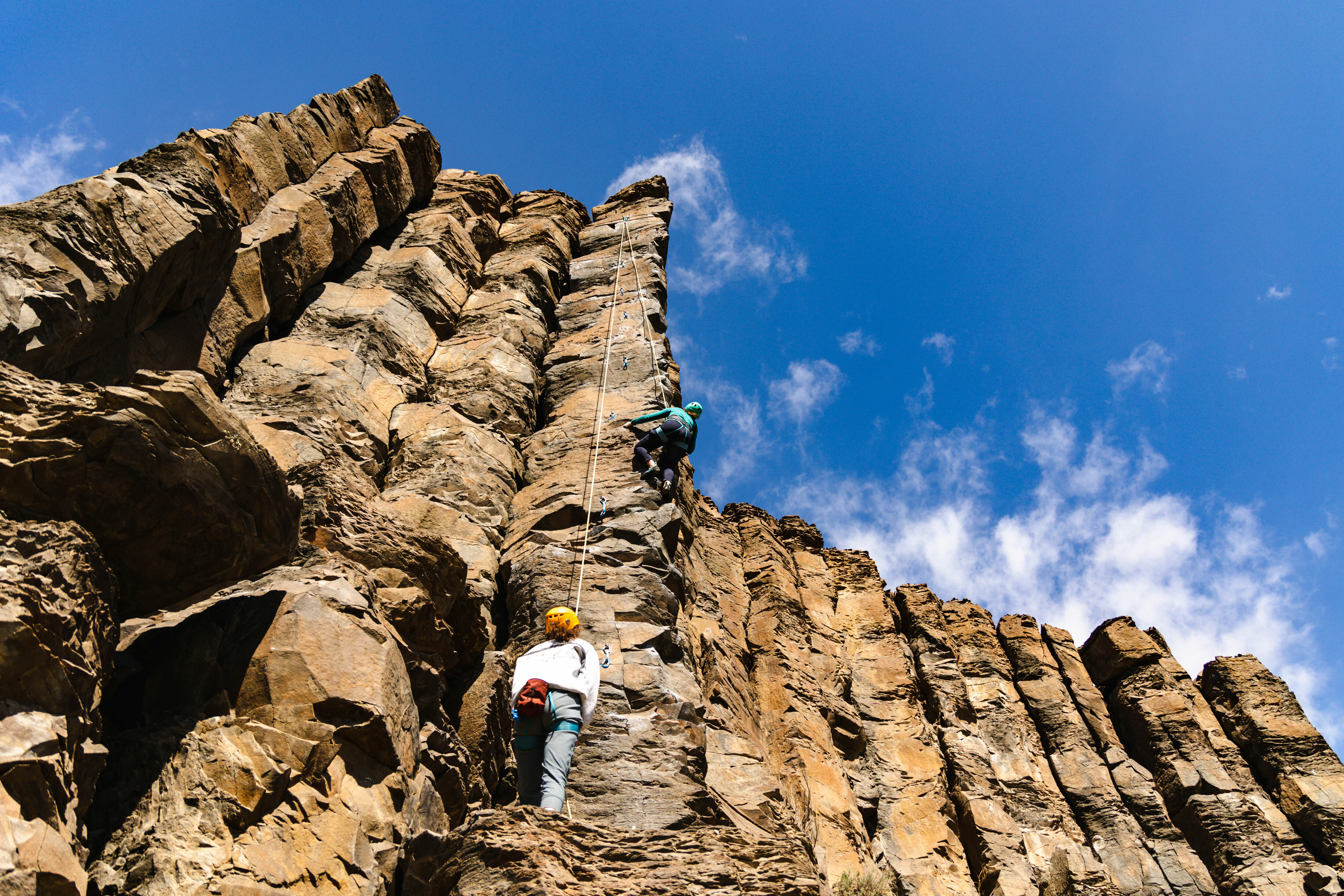
Outdoor Rock Climbing Near Seattle
Climbers scale nature’s gym at the basalt pillars of Frenchman Coulee.
Photograph by Taylor McKenzie Gerlach.
Outdoor Climbing Spots
Exit 38
To sound like an experienced crag rat, call it “the Exits.” Mile marker 38 puts this I-90 location just east of North Bend, an off-ramp that leads to Olallie State Park and a few popular trailheads, literally on the map. Popular rocks sit on both sides of the freeway, many accessed from rudimentary climbers' trails. Most routes are single-pitch and sport, a few with walk-up access for setting top ropes—making these rocks Disneyland to the brand-new climber.
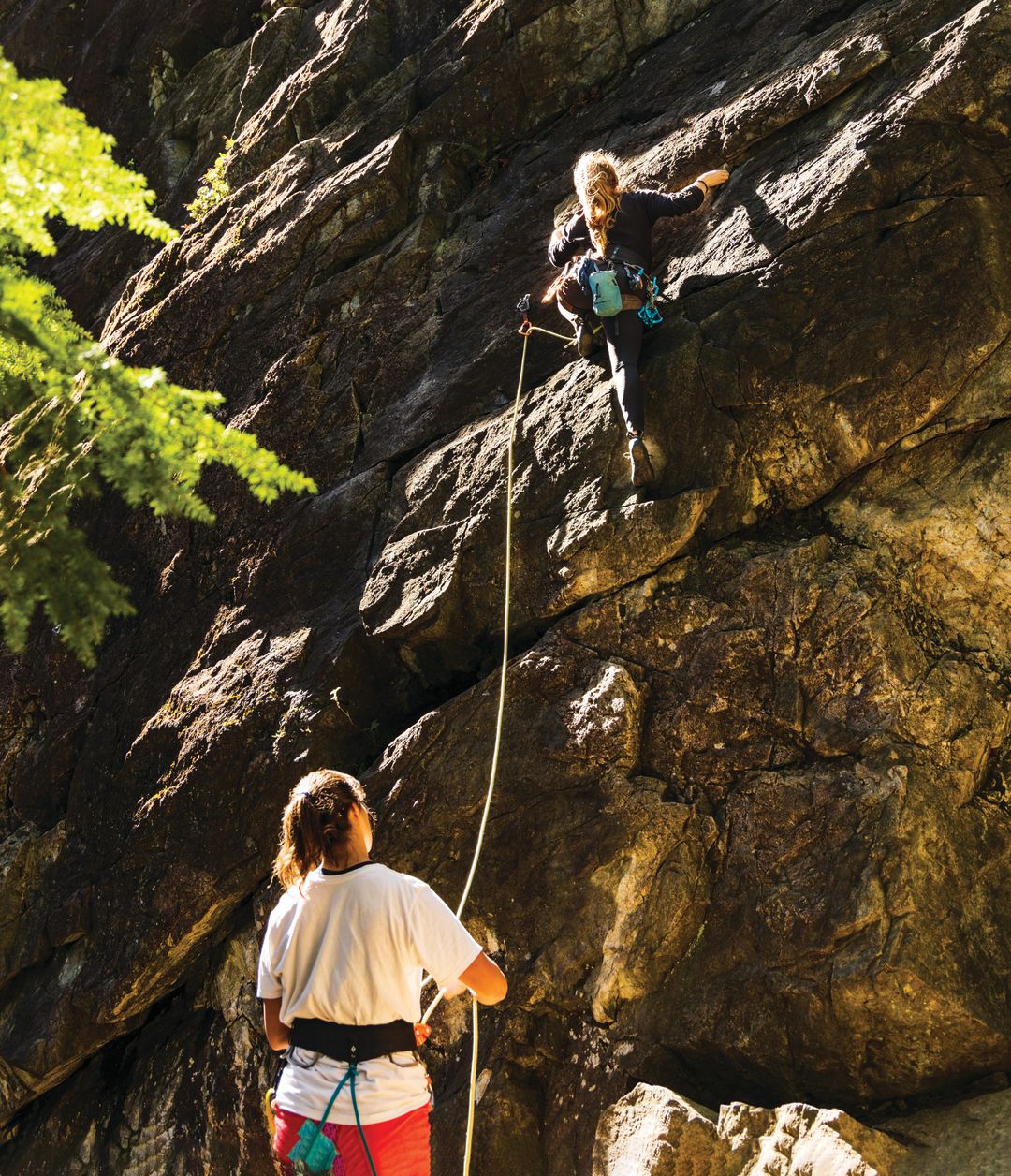
Easy access: The Exits area is peppered with bolted climb routes.
Image: Taylor McKenzie Gerlach
Index Town Wall
With a mix of sport and trad—meaning pre-bolted and all-natural rock—Index’s granite cliff face is popular among serious climbers willing to make the trek to the Snohomish County mountains. The nearby town has shrunk since its timber boom days, but the hike into the climbing routes offers big views of the forested valley.
Frenchman Coulee
Located just east of the Columbia River, the climbing destination known as Vantage (even though the address is in the town of Quincy) offers sunshine year-round. The columnar basalt formed by lava flows millions of years ago gives the cliffs a distinct look, like a cluster of giant drinking straws made of rock, all jutting up in the Central Washington sky. Given the distance from a city, the camping areas can be party central on weekends.
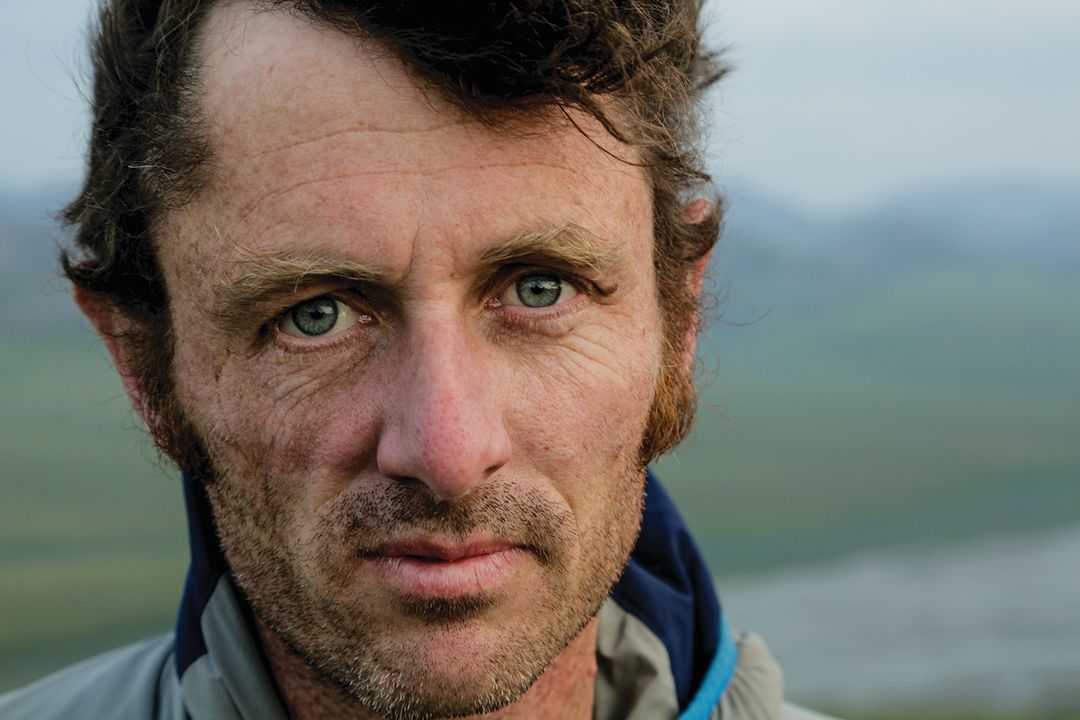
Image: Courtesy Fitz Cahall
Fitz Cahall Tells All
The Dirtbag Diaries founder inscribes climbing tales into the permanent record.
There are two kinds of climbing story. One is the official account of a notable ascent, maybe the first time someone’s summited a particular peak or performed a significant move. But then there’s the other kind of yarn, the kind that interests Seattle podcaster Fitz Cahall: “The informal stories out there, being shared around campfires,” he says. “You know, that you would hear when you were on a long car ride with a friend.”
With those kind of outdoor tales in mind, Cahall launched the podcast The Dirtbag Diaries in 2007. He recorded anecdotes—some his own, but mostly from others—of near-death experiences on volcanoes and unclimbed routes on Washington peaks, of photographing El Capitan and strange paying gigs for climbers.
Cahall’s own climbing background and Northwest residency fed many stories, but so did backcountry skiing and rafting and thru-hiking. Naturally they became about more than sport, too—parenthood, loss, generational connection, immigration, war. More than 300 episodes later, The Dirtbag Diaries has become a chronicle of the outdoor industry, a This American Life for adults who get up before dawn to ruin their knees.
Once a bona fide vagabond climber himself but now raising children in a more comfortable Seattle home, Cahall’s definition of “dirtbag” has grown since his youth. “I think dirtbag is a state of mind and it comes from making the most out of little,” he says. He notes that not everyone can—or should—be Fred Beckey, the Seattle legend who camped at trailheads and hitchhiked with a climbing rope over his shoulder well into his 80s. “So for me, it’s just somebody who’s kind of committed to the outdoor lifestyle,” he says.
After 15 years and a company that’s grown beyond podcasts to documentary film and marketing across the outdoor industry, Cahall nevertheless found himself idle during the pandemic. So he called up friend and subject matter expert Alex Honnold—of Free Solo fame—and the two started the podcast Climbing Gold, covering history and major issues in the sport. Together they watched their dirtbag pastime become an Olympic event in 2020.
When Cahall began climbing it was a niche sport; today its popularity has boomed into a gym scene, a trendy style, and a circle of celebrity athletes. Cahall’s glad to see it, though he admits his generation has to work on how to be good mentors “without being the old fuddy-duddy that just tells everyone, ‘Back in my day….’”
Even still, his oral storytelling was never about cementing the exploits of the sport’s most accomplished technicians. The most fascinating episodes, Cahall found, usually came from less proficient climbers. “I’m more interested in this incredibly colorful collection of people who made up the broader climbing community,” he says. Their stories live on for campfires and car rides yet to come.
